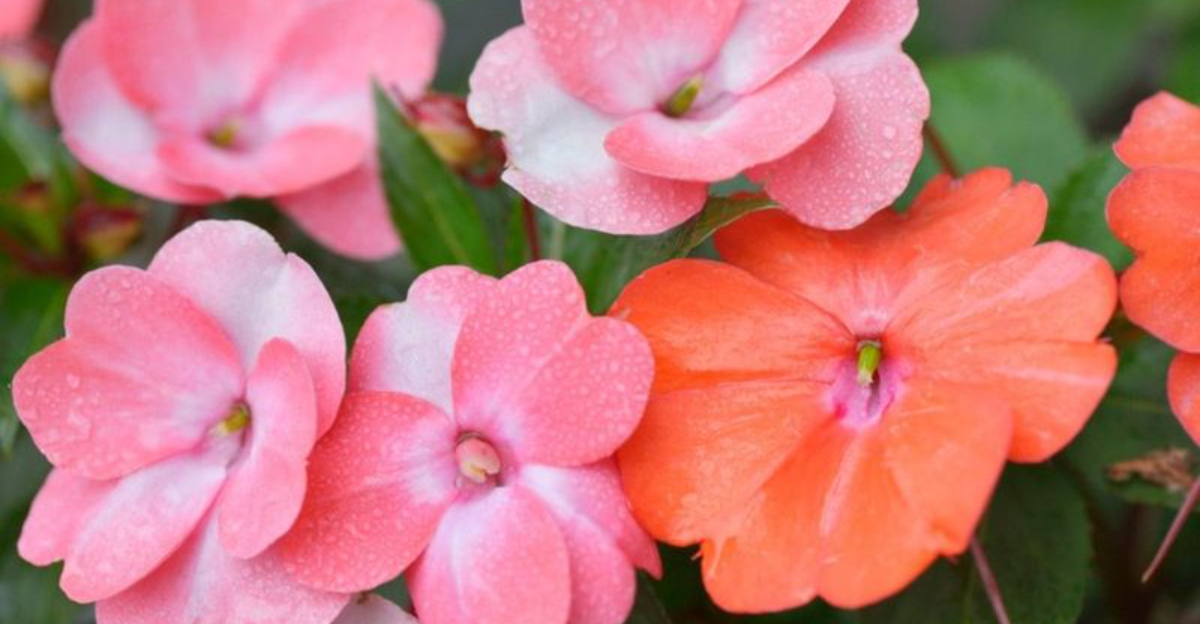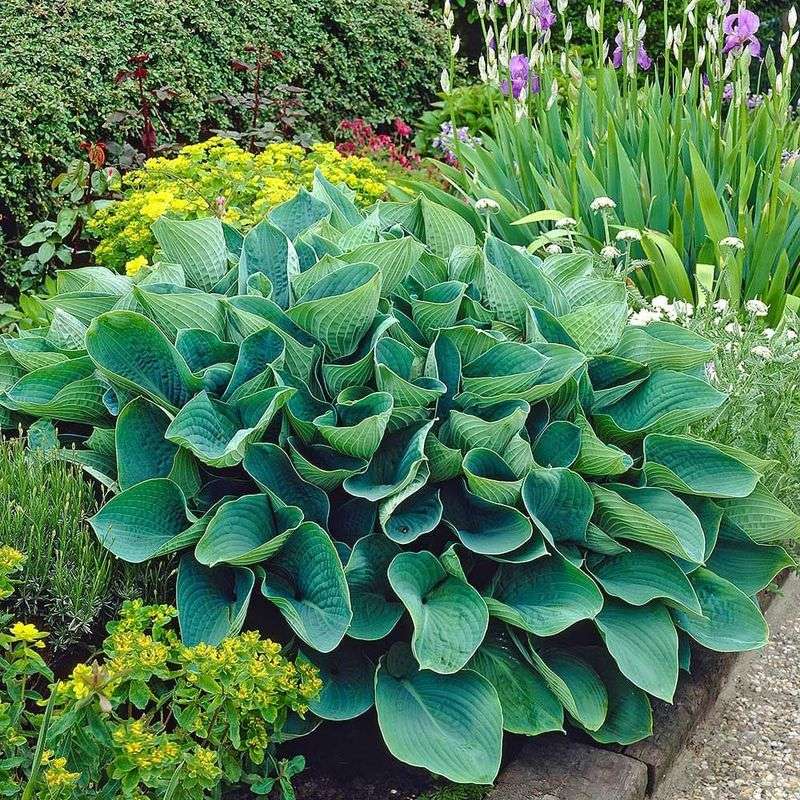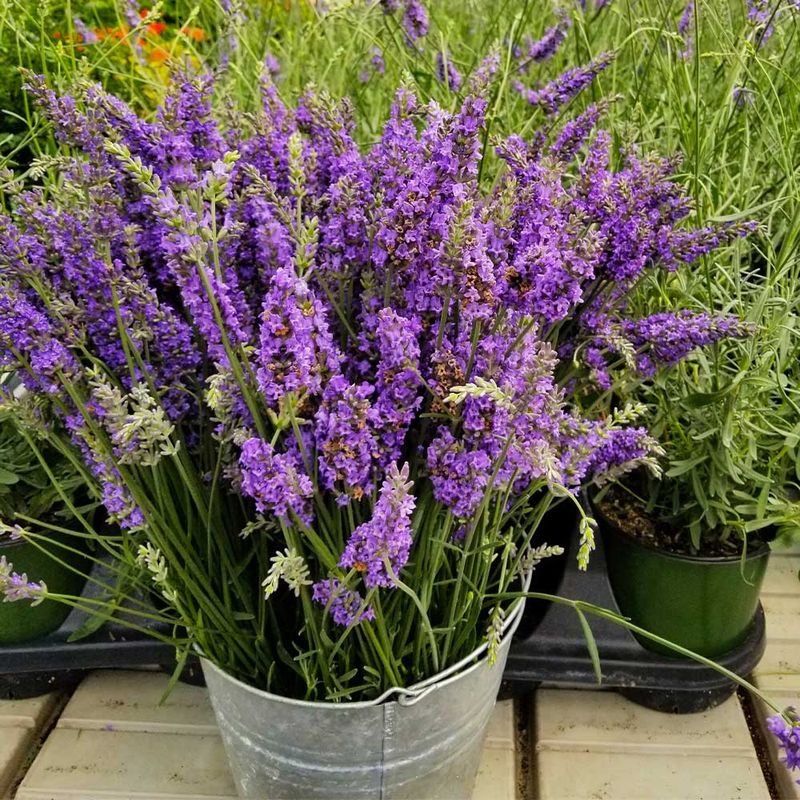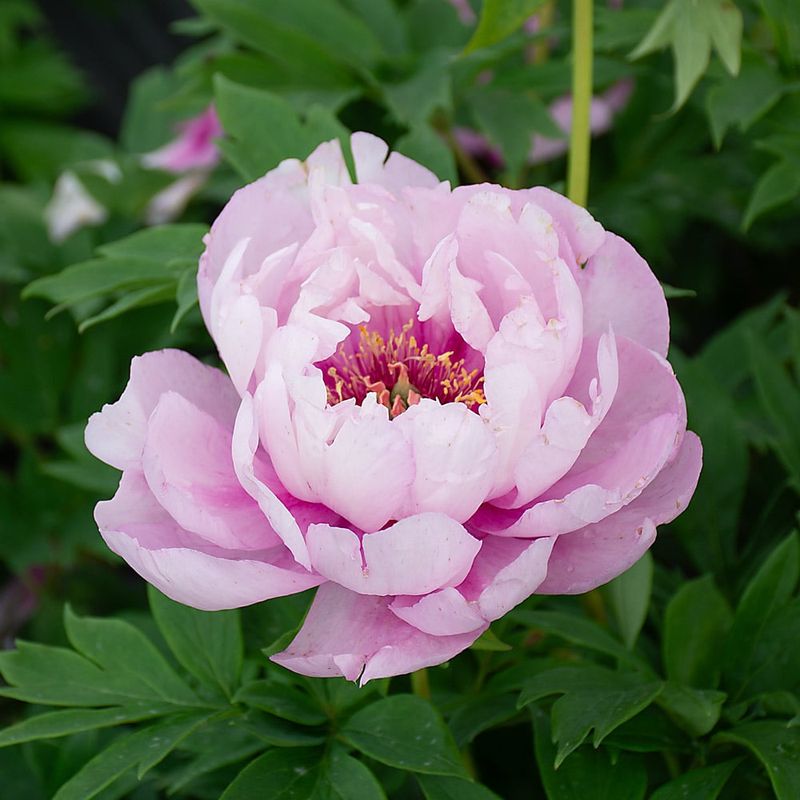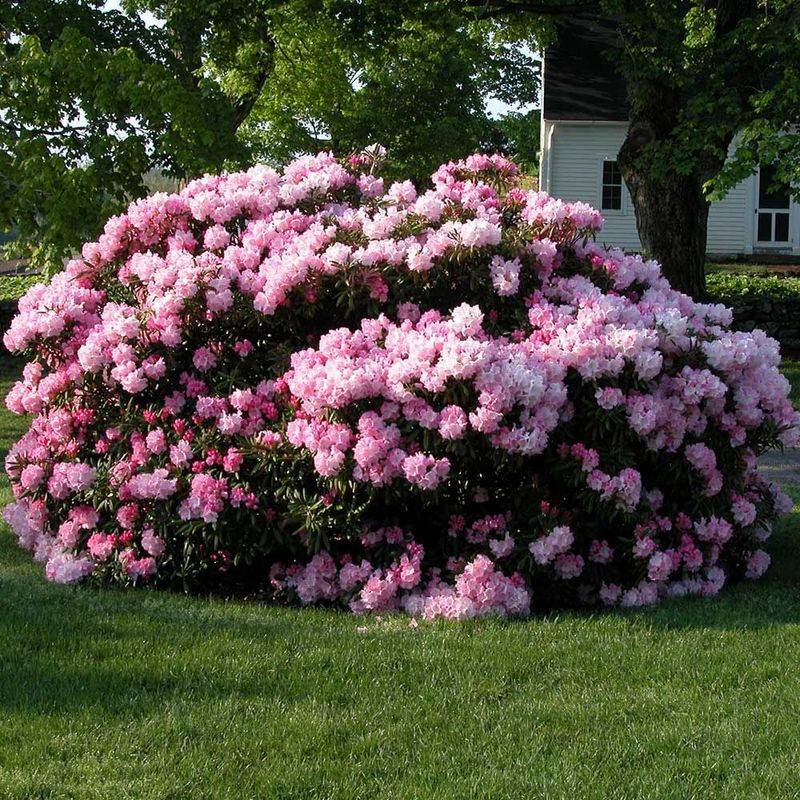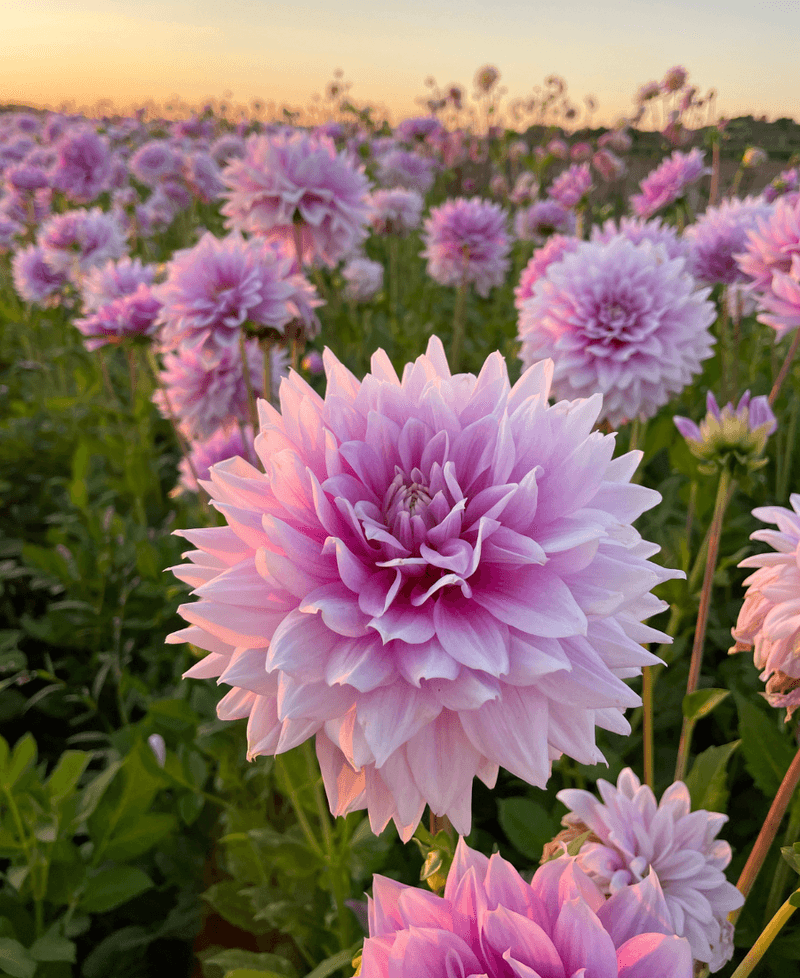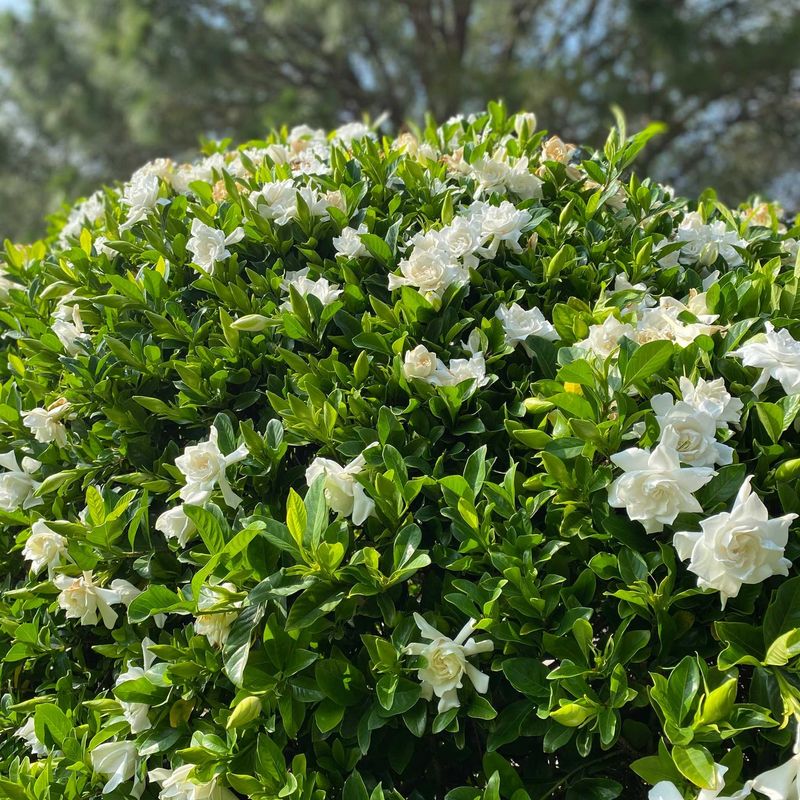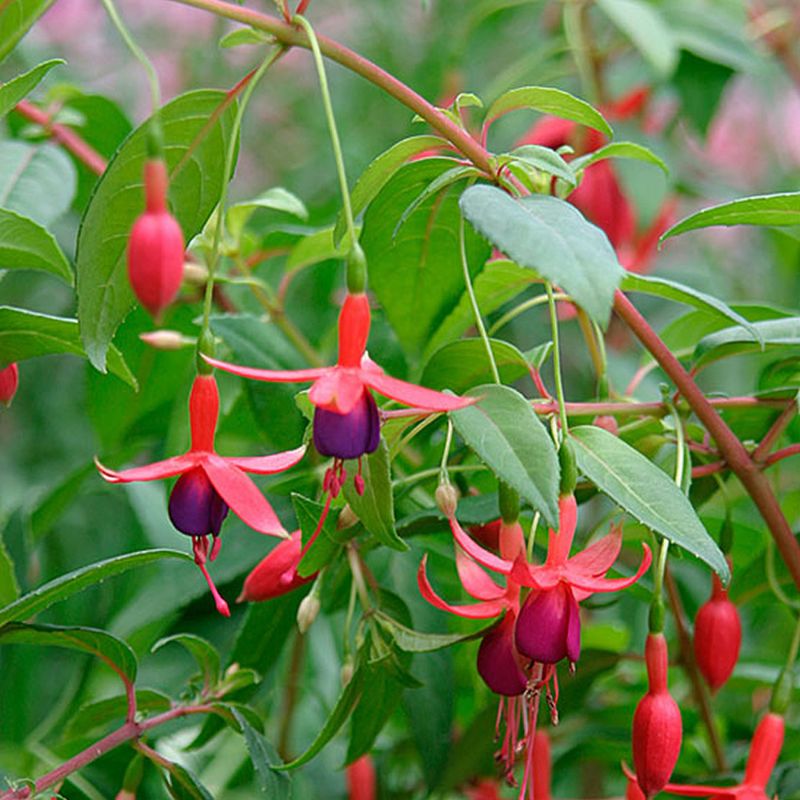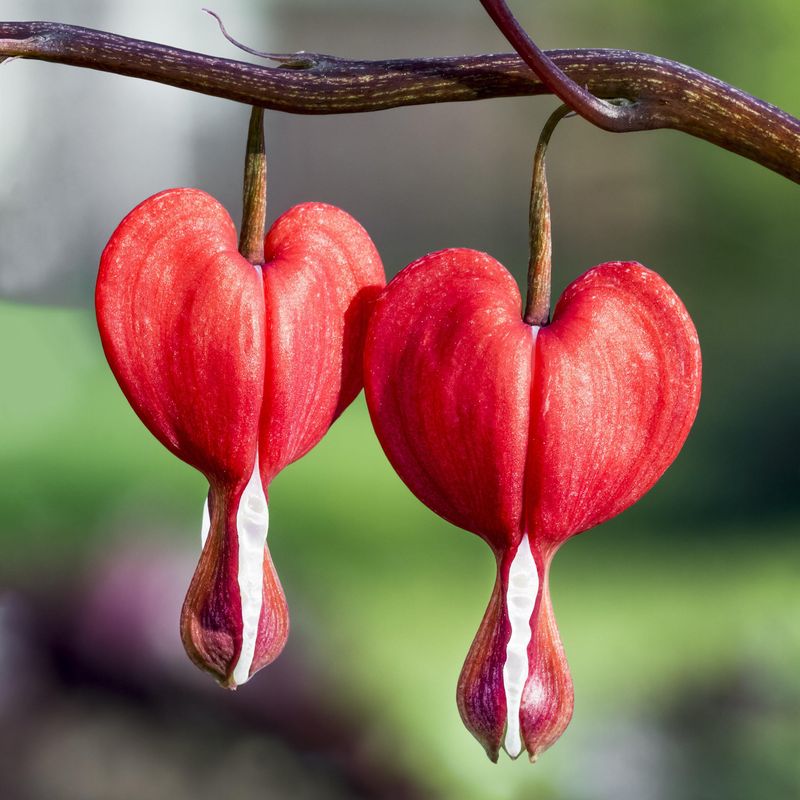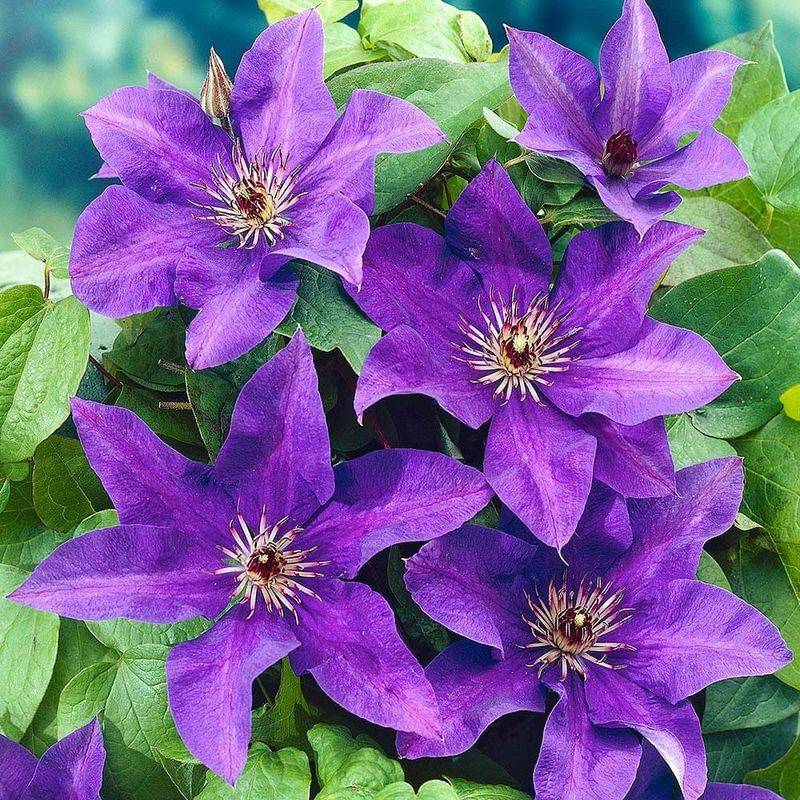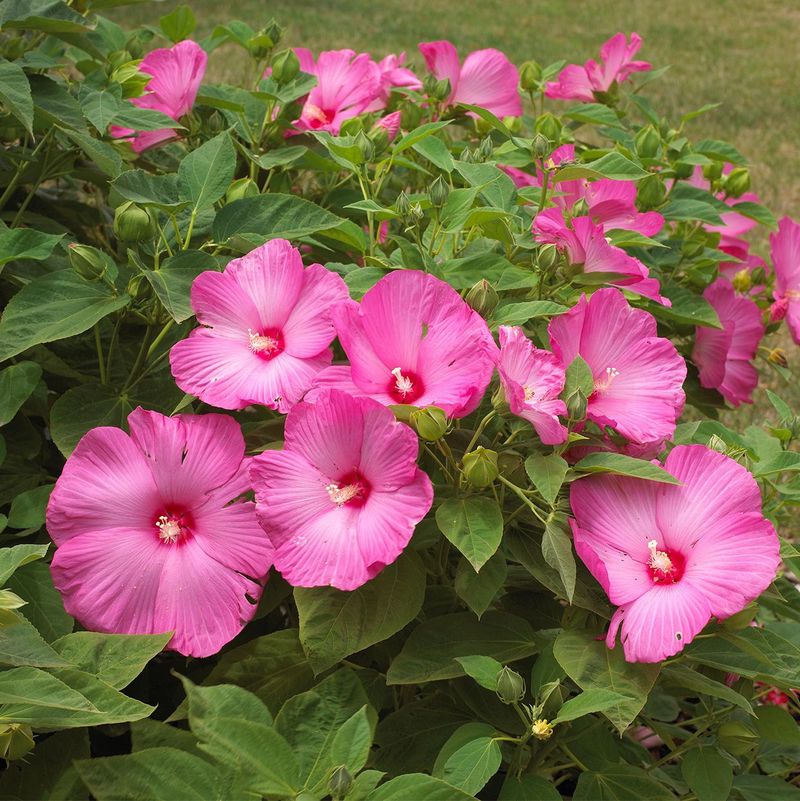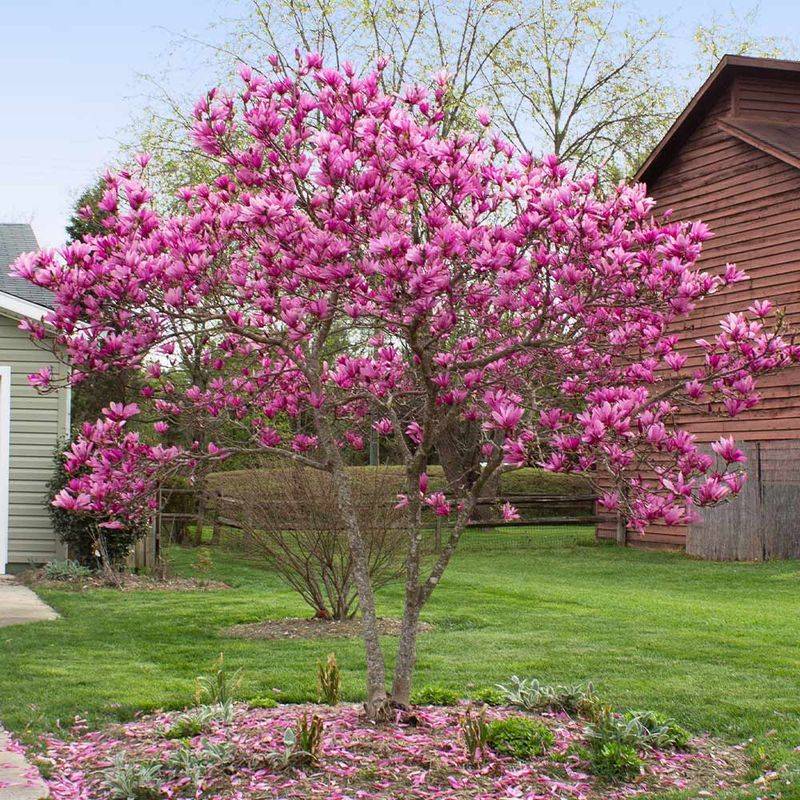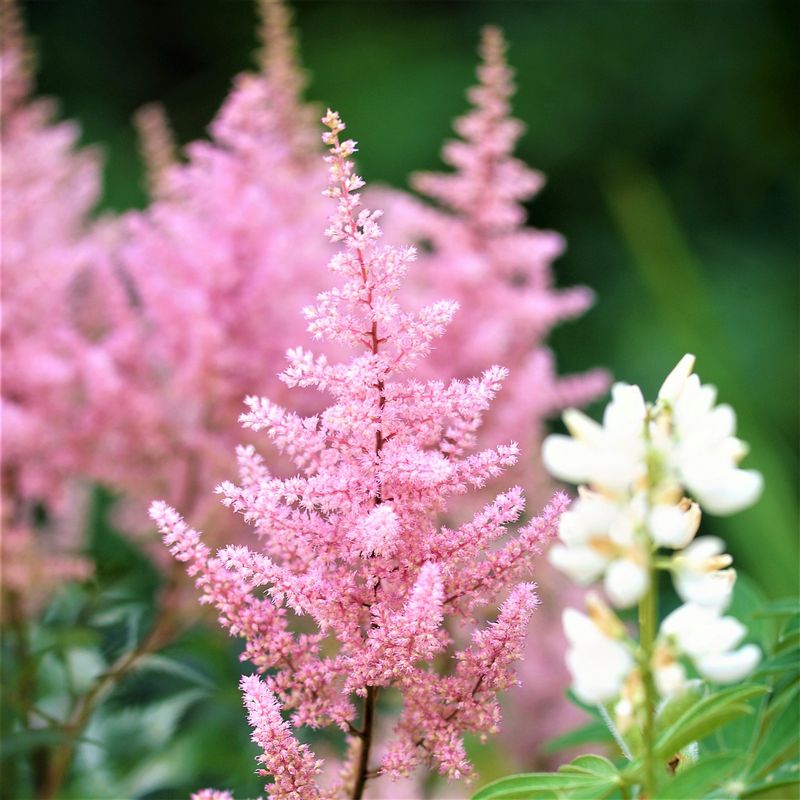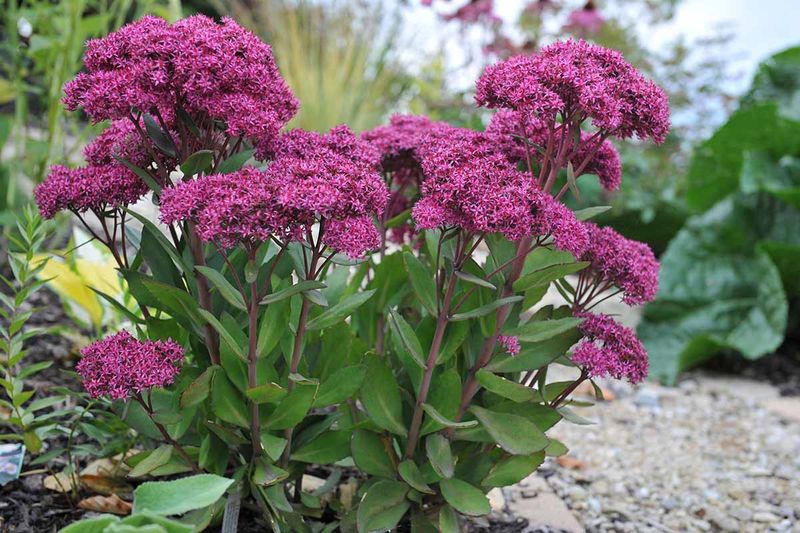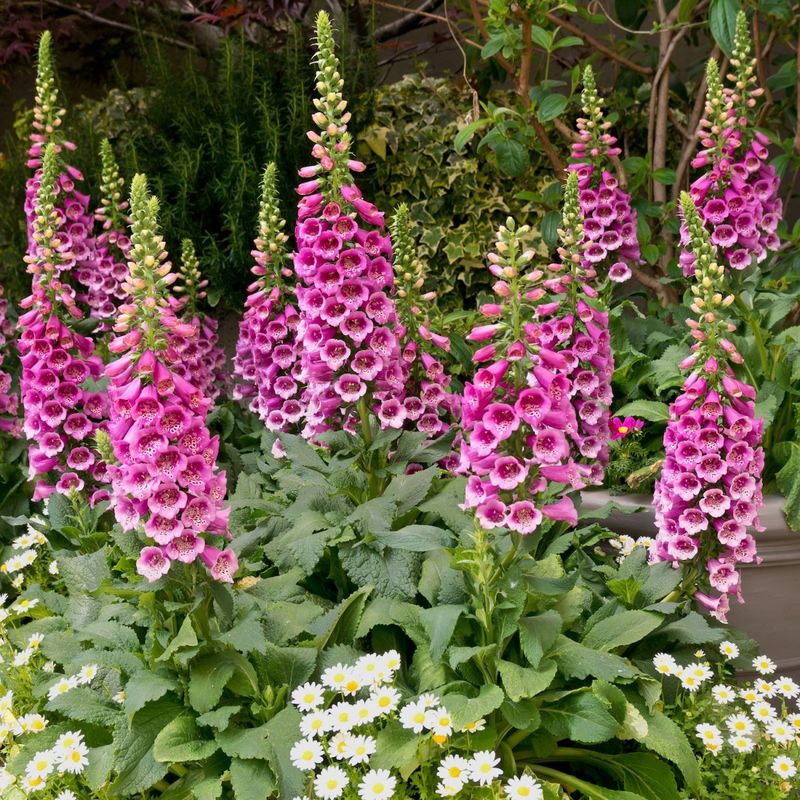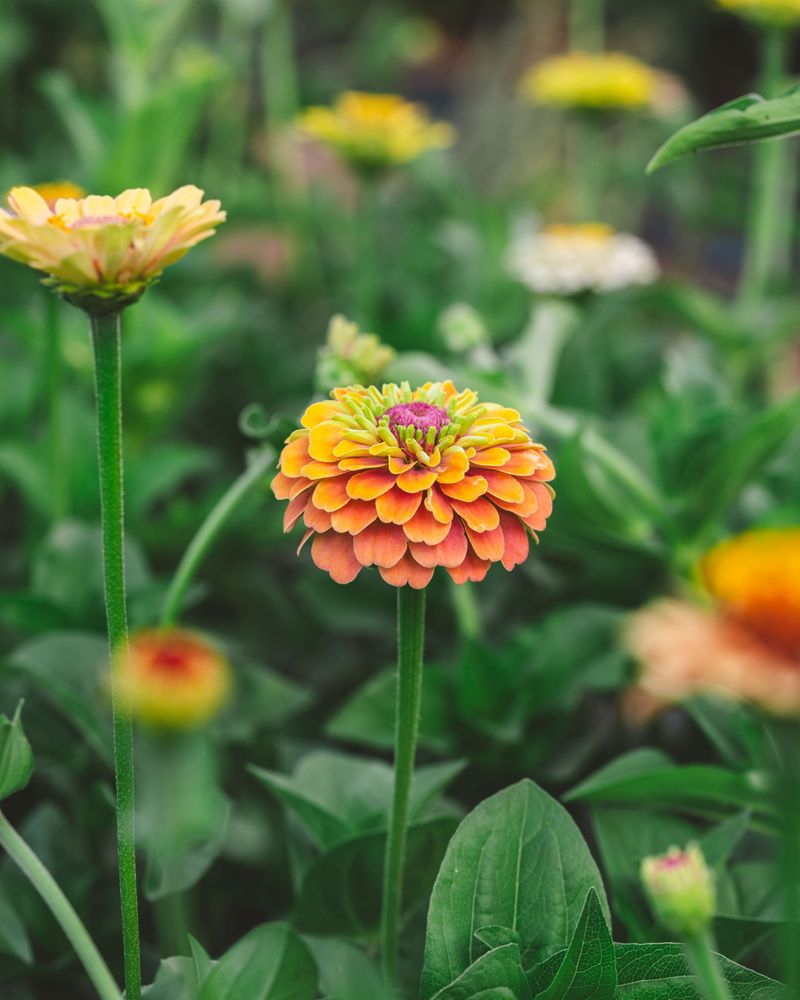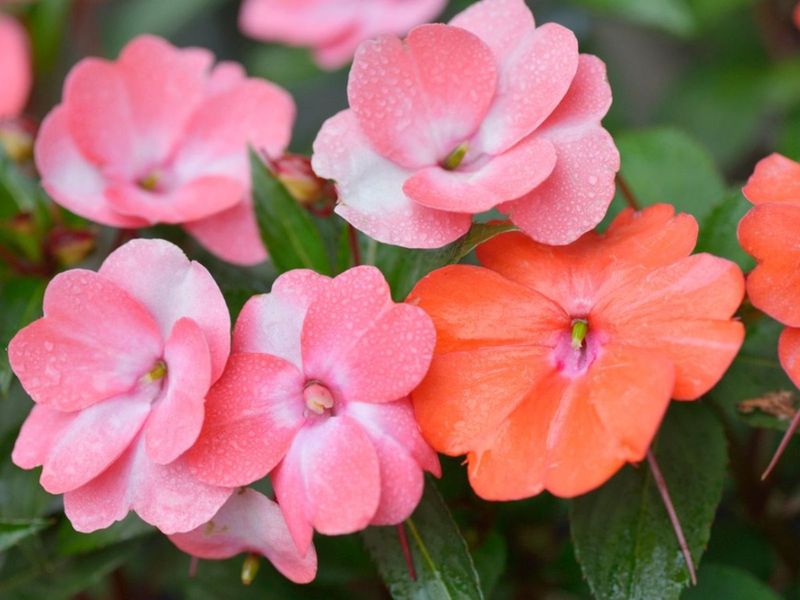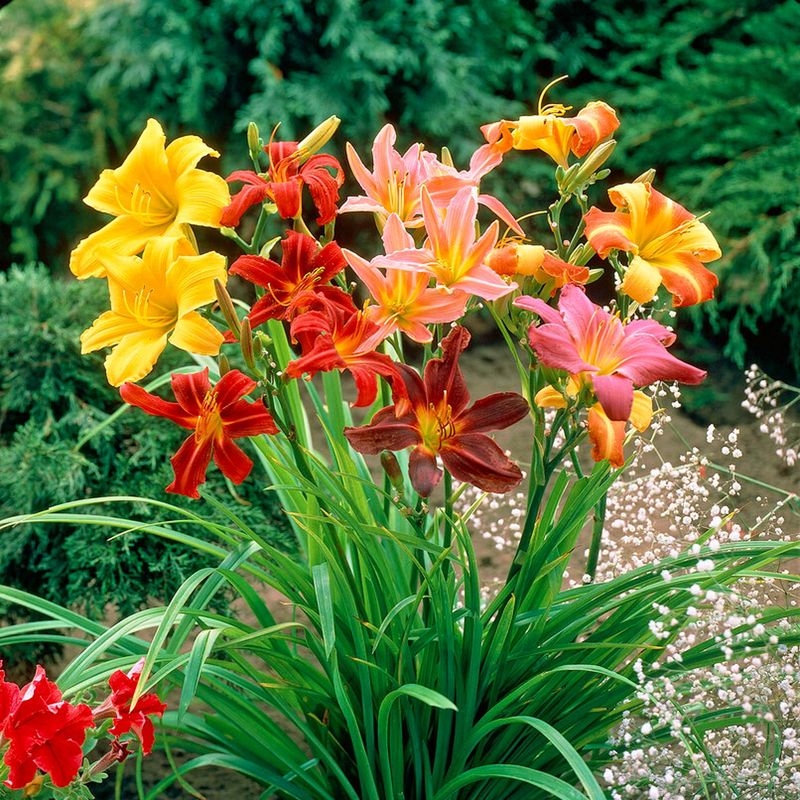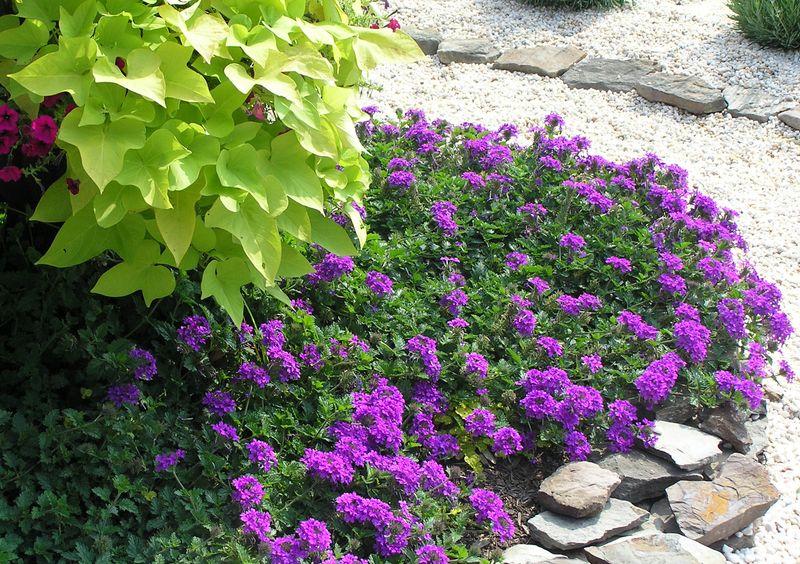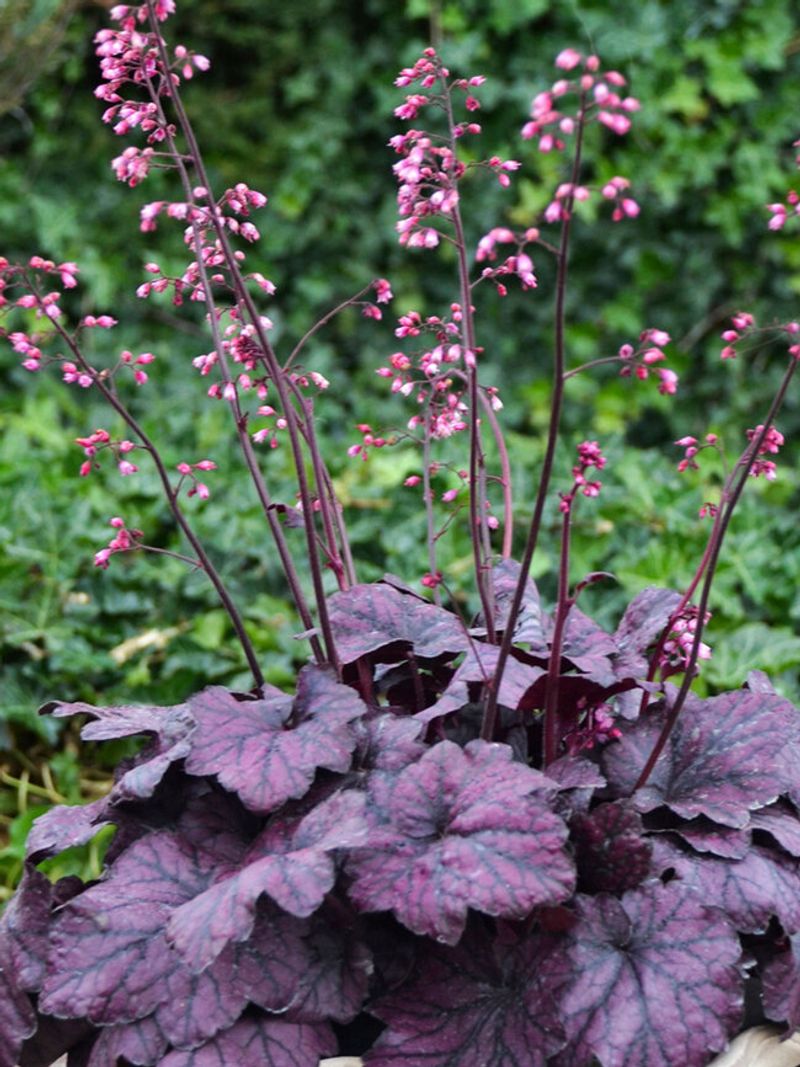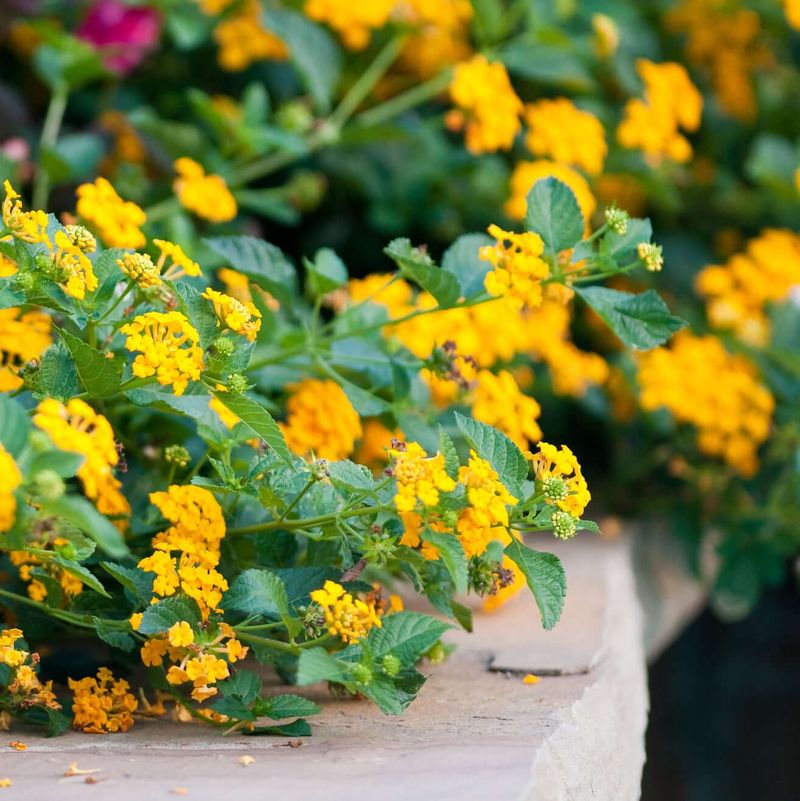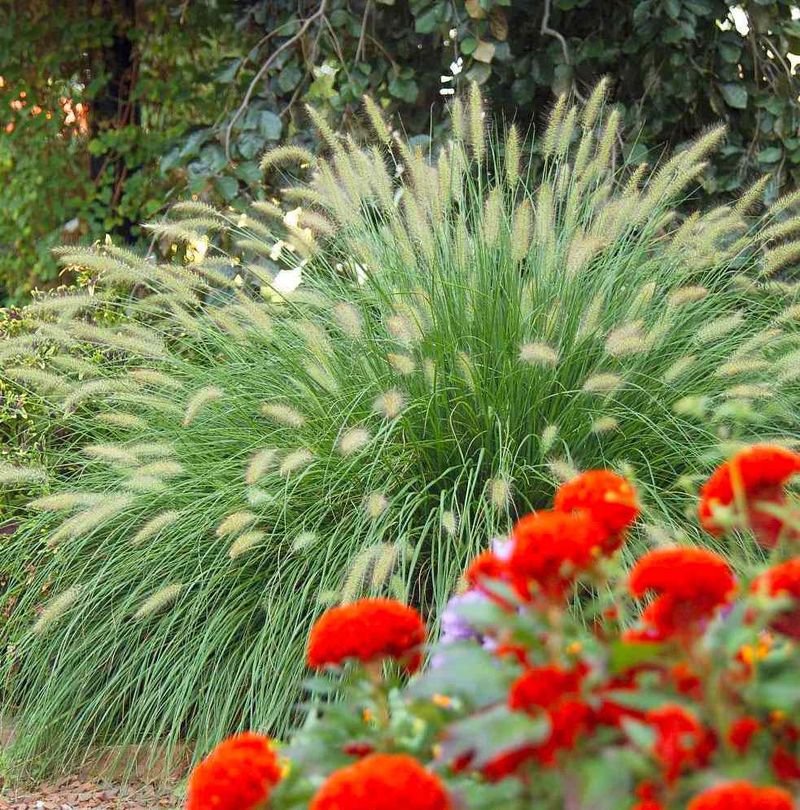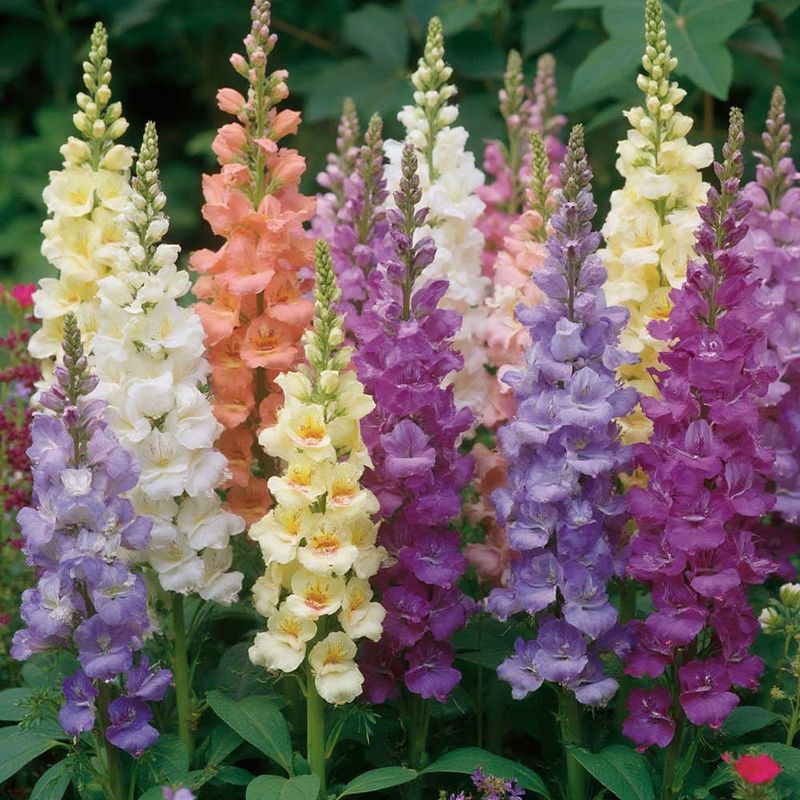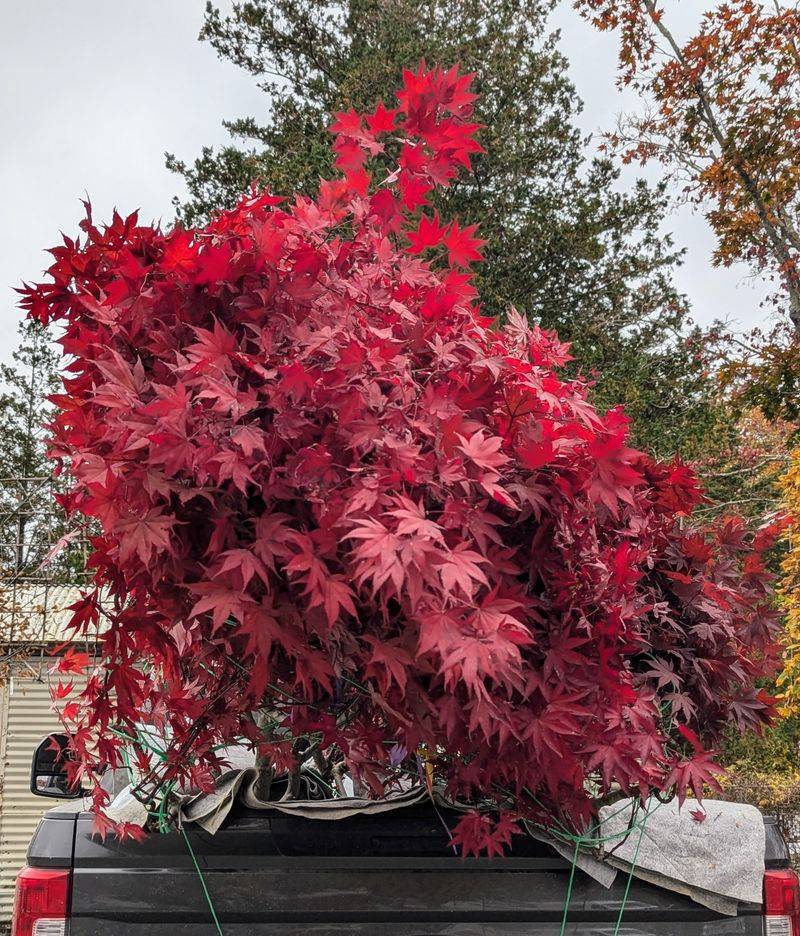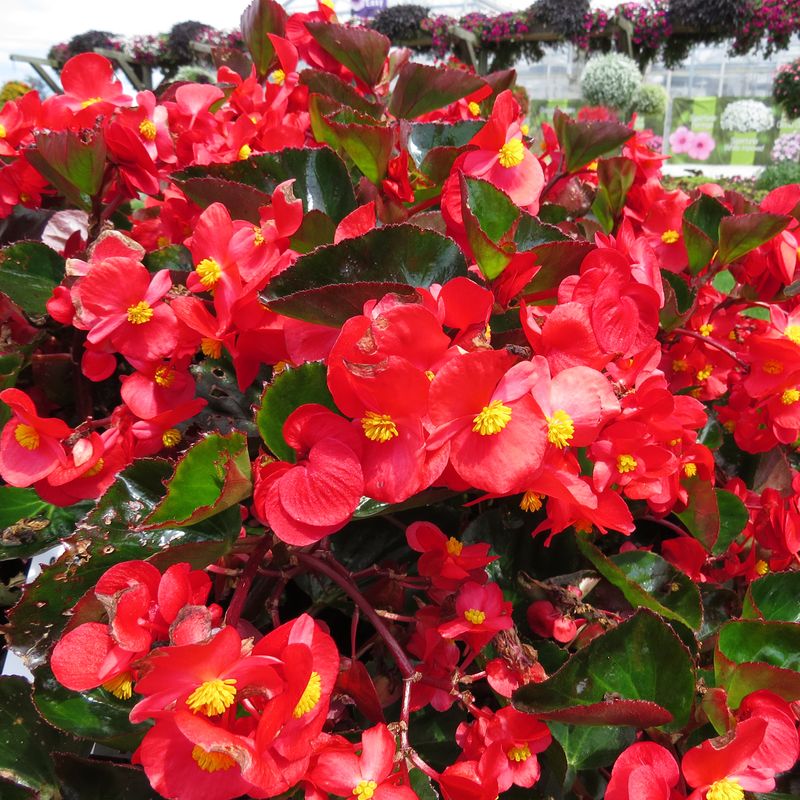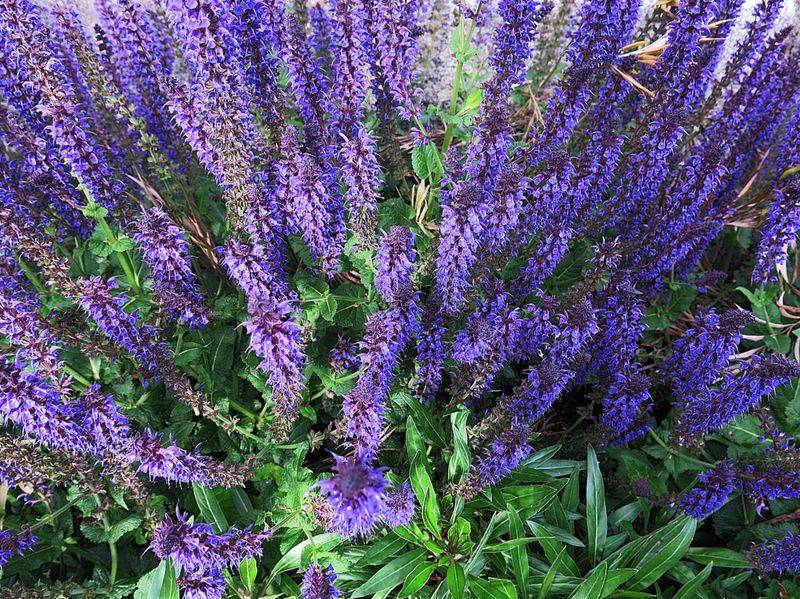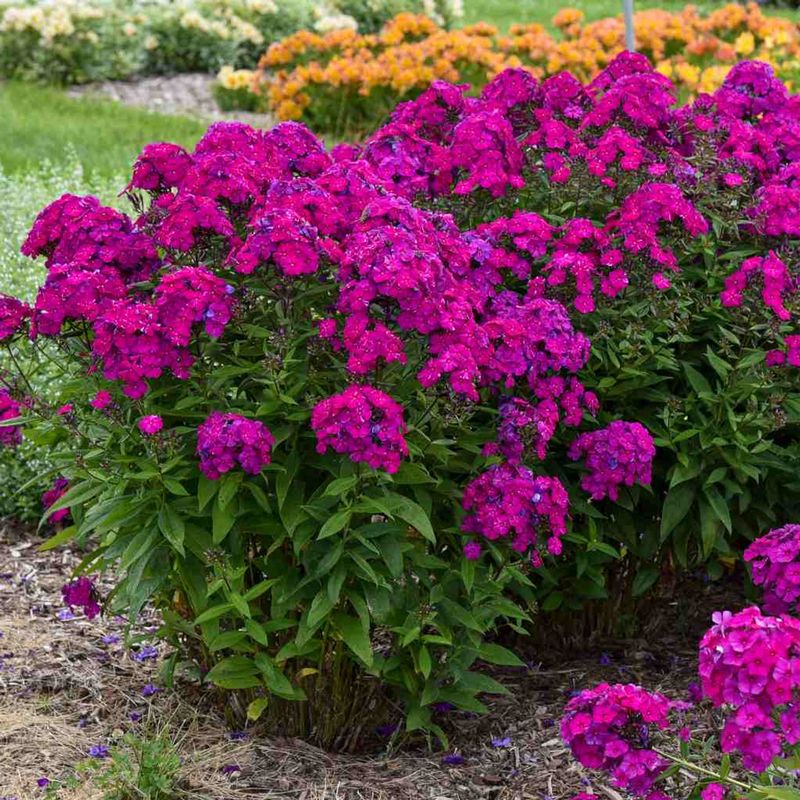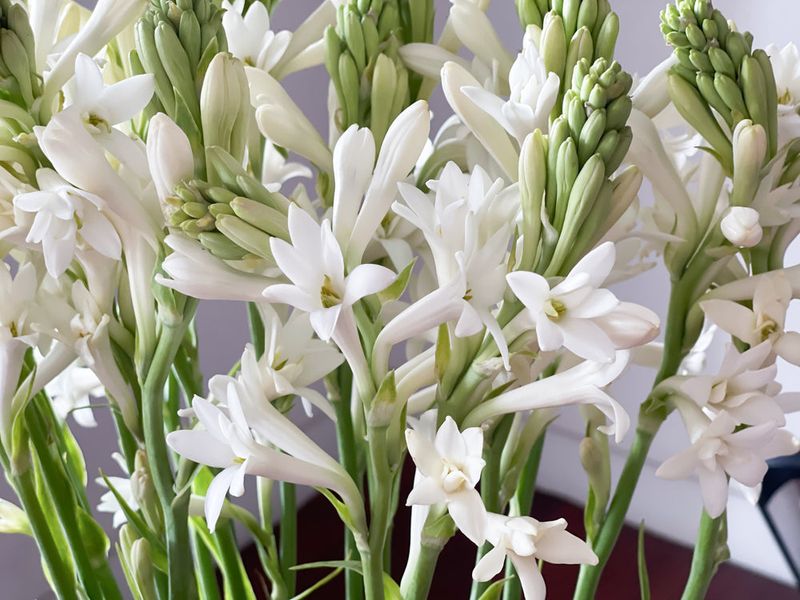Azaleas are popular for their vibrant flowers and lush greenery, but they require specific growing conditions. If you’re looking for beautiful alternatives that are easier to care for, consider these 33 stunning plants.
Each offers unique charm and resilience, providing a burst of color and life to any garden. From the delicate blooms of the camellia to the hardy foliage of hostas, these selections will inspire you to diversify your garden with less fuss and more beauty.
1. Camellia
Camellias are known for their romantic, rose-like blooms that can transform any garden into a dreamy escape. The flowers, which bloom in a variety of colors from white to deep red, offer a long-lasting display.
Their glossy, evergreen leaves add structure and depth to garden beds year-round. Camellias thrive in well-drained, acidic soil and partial shade, making them a versatile choice.
Did you know? Camellias have been cultivated in Asia for centuries, and one species, Camellia sinensis, is used to produce tea.
2. Hosta
Hostas are a gardener’s delight, known for their extravagant foliage rather than flowers. With leaves ranging from vibrant green to blue-grey, each variety offers unique patterns that catch the eye.
These plants thrive in the shade, making them perfect for those tricky spots under trees or in the shadow of buildings. Hostas are low-maintenance, requiring minimal care once established.
Fun fact: Hostas originate from NE Asia and are often called “plantain lilies.” Their resilience makes them a favorite among both novice and seasoned gardeners.
3. Lavender
Lavender brings not only beauty but also a calming fragrance that evokes the serene landscapes of Provence. Its slender, purple blooms appear in midsummer and attract pollinators like bees and butterflies.
This sun-loving plant thrives in well-drained soil, adding a touch of Mediterranean charm to any garden. Lavender is also prized for its aromatic oils, often used in aromatherapy.
History tidbit: Lavender has been used since Roman times for bathing and scenting rooms, reflecting its timeless appeal.
4. Hydrangea
Hydrangeas captivate with their large, round flower heads that can change color based on soil pH. Whether you prefer blues, pinks, or purples, these blooms offer a dynamic display.
They flourish in rich, well-drained soil with moderate sunlight, making them adaptable to various garden settings. Hydrangeas are also a symbol of heartfelt emotion, often given as gifts.
Did you know? The color-changing trait of hydrangeas is due to the presence of aluminum ions, influenced by soil acidity.
5. Peony
Peonies are the epitome of floral opulence, with their lush, bowl-shaped blooms that are the centerpiece of any garden. Their fragrance is as captivating as their appearance, reminiscent of sweet spring days.
These perennials thrive in well-drained soil and full sun, rewarding gardeners with blooms that last for decades. Peonies also make excellent cut flowers, bringing elegance indoors.
Interesting fact: Peonies are often associated with romance and prosperity, making them popular in wedding bouquets.
6. Rhododendron
Rhododendrons are the show-stoppers of spring, with their abundant clusters of flowers creating a riot of color. These evergreen shrubs provide year-round interest with their decorative leaves.
They thrive in acidic, well-drained soil and partial shade, requiring minimal maintenance once established. Rhododendrons attract hummingbirds, adding lively movement to gardens.
Did you know? The name “rhododendron” comes from the Greek words for rose (rhodo) and tree (dendron), highlighting their floral grandeur.
7. Dahlia
Dahlias are nature’s fireworks, bursting with color and intricate patterns. These tuberous plants offer an astounding variety of forms and sizes, from petite pom-poms to large dinner-plate blooms.
They prefer sunny spots and well-drained soil, rewarding gardeners with a prolonged flowering season. Dahlias make stunning cut flowers, adding a splash of color indoors.
Fun fact: Dahlias originate from Mexico, where they were once used as a food source before their ornamental value was discovered.
8. Gardenia
Gardenias enchant with their creamy white flowers and heavenly fragrance, often associated with southern gardens. Their glossy leaves provide a striking backdrop to the blooms.
These evergreen shrubs thrive in warm climates, preferring acidic soil and some shade. Gardenias are ideal for planting near patios or walkways, where their scent can be enjoyed.
Did you know? Gardenias symbolize purity and sweetness, often featured in wedding arrangements and perfumes.
9. Fuchsia
Fuchsias are the dancers of the plant world, with their pendulous blooms resembling ballerinas in tutus. These shade-loving plants add a splash of color to hanging baskets and garden borders.
Known for their unique, two-toned flowers, fuchsias come in a variety of vibrant hues, drawing attention and admiration. They thrive in well-drained, moist soil and benefit from regular feeding.
Fun fact: Fuchsias were discovered by French botanist Charles Plumier in the late 17th century and named after German botanist Leonhart Fuchs.
10. Bleeding Heart
Bleeding hearts are a garden’s romantic storytellers, with heart-shaped blooms that seemingly “bleed” droplets of color. These perennial wonders thrive in shady spots, adding a whimsical touch to woodland gardens.
Their soft, fern-like foliage complements the charming flowers, creating a lush, layered effect. Bleeding hearts prefer moist, well-drained soil and bring early spring gardens to life.
Did you know? The bleeding heart is native to Asia and was introduced to the West in the 19th century, captivating gardeners with its unique floral display.
11. Clematis
Clematis vines offer a tapestry of color, with star-shaped flowers in hues ranging from deep purple to soft pink. These climbers are perfect for adding vertical interest to fences and trellises.
Clematis prefers sunny locations with roots shaded by other plants, thriving in well-drained soil. Their dramatic blooms can appear throughout the growing season, enchanting onlookers.
Fun fact: With over 300 species, clematis flowers are known as “queen of climbers” and have been cultivated since the 16th century.
12. Hibiscus
Hibiscus plants are the embodiment of tropical beauty, with their bold, trumpet-shaped flowers that invite admiration. These sun-loving plants bring a touch of paradise to gardens, with blooms in vivid shades of red, yellow, and pink.
Hibiscus thrives in well-drained soil and warm climates, often becoming the centerpiece of garden landscapes. Their flowers attract hummingbirds, adding dynamic movement to the garden.
Did you know? In Hawaii, hibiscus is the state flower and symbolizes hospitality and joy.
13. Lilac
Lilacs are cherished for their intoxicating fragrance and clusters of delicate flowers that herald the arrival of spring. With blooms ranging from light pink to deep purple, they add a splash of color to any landscape.
These hardy shrubs thrive in well-drained soil and full sun, offering minimal maintenance and maximum beauty. Lilacs are often planted for their sweet scent, which carries on the breeze.
Interesting tidbit: Lilacs belong to the olive family and were first brought to Europe from the Ottoman Empire in the 16th century.
14. Magnolia
Magnolias are the epitome of elegance with their large, fragrant blooms that announce the arrival of spring. Their flowers, often white or pink, adorn trees with a majestic presence.
These trees prefer well-drained, slightly acidic soil and thrive in full sun to partial shade. Magnolias are a timeless choice for gardens, offering a graceful silhouette and enchanting aroma.
Fun fact: Magnolia trees have existed for millions of years, with fossil records dating back 95 million years, showcasing their ancient lineage.
15. Astilbe
Astilbe plants bring a touch of softness to gardens with their feathery plumes of pink, red, or white. These shade-loving perennials are perfect for adding texture and color to woodland gardens.
Thriving in rich, moist soil, astilbes are low-maintenance and offer a prolonged flowering season. Their fern-like foliage adds depth and contrast to garden beds.
Did you know? Astilbe is native to Asia and North America, and its name comes from the Greek words “a” meaning without and “stilbe” meaning brightness, referring to its delicate blooms.
16. Sedum
Sedum, also known as stonecrop, is a succulent that thrives in poor soil with little water. These hardy plants are perfect for rock gardens or as ground cover, offering a variety of textures and colors.
Sedum’s star-shaped flowers appear in late summer, providing a burst of pink or yellow atop fleshy green leaves. Their resilience and easy-care nature make them a favorite among busy gardeners.
Fun fact: Sedum is often used in green roofs for its drought resistance and ability to attract pollinators.
17. Foxglove
Foxgloves are the towering beauties of the garden, with tall flower spikes covered in tubular blooms. Their purple, pink, or white flowers add vertical interest and attract pollinators.
These biennials prefer partial shade and well-drained soil, often self-seeding to return year after year. Foxgloves are beloved for their cottage garden charm.
Did you know? Foxglove is the source of digitalis, a heart medication, highlighting its dual role as both a beauty and a medicinal plant.
18. Zinnia
Zinnias are the cheerful companions of summer gardens, with bright, daisy-like flowers in an array of colors. These annuals thrive in full sun and well-drained soil, offering nonstop blooms.
Their long-lasting flowers are perfect for cutting, bringing bursts of color indoors. Zinnias are also a magnet for butterflies, creating a lively garden atmosphere.
Fun fact: Zinnias are native to Mexico and were once considered “flowers of the dead” by the Aztecs, used in traditional ceremonies.
19. Impatiens
Impatiens bring a splash of color to shaded garden spots with their bright, cheerful blooms. These annuals thrive in moist, well-drained soil, providing a continuous display of pink, red, and white flowers.
Their compact growth and abundant blooms make them ideal for borders and containers, adding vibrancy to shaded areas. Impatiens are easy to care for, making them a favorite among gardeners.
Did you know? Impatiens are also known as “touch-me-nots” due to their seed pods, which burst when touched, dispersing seeds widely.
20. Daylily
Daylilies are the reliable stars of the perennial garden, with their bright, trumpet-shaped blooms that last just a day. Despite their fleeting flowers, they produce multiple blooms on each stalk, ensuring a colorful display throughout summer.
These hardy plants thrive in full sun and well-drained soil, requiring minimal care. Daylilies are also drought-tolerant, making them perfect for low-maintenance gardens.
Fun fact: Though called “day” lilies, these plants are not true lilies but belong to the genus Hemerocallis.
21. Verbena
Verbena is a sun-loving plant that brings delicate clusters of purple flowers to gardens. Known for their long blooming season, these perennials are perfect for borders and containers.
Verbena thrives in well-drained soil and full sun, attracting butterflies and other pollinators. Their low-growing habit makes them ideal for ground cover, creating a carpet of color.
Did you know? Verbena has been used medicinally for centuries, believed to have calming properties and once referred to as “tears of Isis.”
22. Coreopsis
Coreopsis, also known as tickseed, offers cheerful, daisy-like flowers in vibrant yellow hues. These native plants are hardy and drought-tolerant, thriving in poor soil and full sun.
Their long-lasting blooms make them a favorite for pollinators, adding life to any garden. Coreopsis is perfect for borders and wildflower gardens, bringing a sunny disposition.
Fun fact: Coreopsis was named the state wildflower of Florida, reflecting its popularity and adaptability across various landscapes.
23. Heuchera
Heuchera, commonly known as coral bells, offers a stunning array of foliage colors that range from deep purple to bright chartreuse. These perennials are prized for their decorative leaves that add texture to gardens.
Heuchera thrives in partial shade and well-drained soil, making it perfect for shady borders and containers. Their small, bell-shaped flowers attract pollinators, adding dynamic interest to your garden.
Did you know? Heuchera is native to North America and was traditionally used by Native Americans for medicinal purposes.
24. Lantana
Lantana is a vibrant, sun-loving plant that brings clusters of multicolored flowers to gardens. These annuals are heat-tolerant and thrive in well-drained soil, adding bold color to borders and containers.
Their sweet nectar attracts butterflies and hummingbirds, creating a lively garden environment. Lantana’s long blooming season ensures continuous color throughout the summer months.
Interesting tidbit: Lantana is considered invasive in some regions due to its vigorous growth, so gardeners should monitor its spread.
25. Marigold
Marigolds are the sunshine of the garden, with their bright orange and yellow blooms that bring warmth to any space. These annuals are easy to grow, thriving in full sun and well-drained soil.
Marigolds are known for their pest-repelling properties, often used in companion planting to protect vegetables. Their long-lasting blooms make them a staple in summer gardens.
Fun fact: Marigolds are often associated with the Day of the Dead celebrations in Mexico, symbolizing the sun and resurrection.
26. Ornamental Grasses
Ornamental grasses add movement and texture to gardens with their feathery plumes and graceful forms. These versatile plants are low-maintenance, thriving in various soil types and climates.
Their tall, arching stems provide structure and year-round interest, especially when backlit by the sun. Ornamental grasses are perfect for adding contrast and rhythm to garden designs.
Did you know? Many ornamental grasses are native to prairies and meadows, contributing to biodiversity and providing habitat for wildlife.
27. Snapdragon
Snapdragons are playful plants with their dragon-like blooms that kids love to squeeze open. These annuals are perfect for adding vertical color to garden beds and borders.
Snapdragons thrive in full sun and well-drained soil, offering a range of colors from pastels to bold reds and yellows. Their long-lasting flowers make them a favorite for cutting gardens.
Interesting fact: Snapdragons are native to the Mediterranean region, and their name comes from the flower’s resemblance to a dragon’s face when pinched.
28. Japanese Maple
Japanese maples are the artisans of the tree world, with their finely cut leaves and stunning seasonal colors. These trees offer striking red, orange, and yellow hues, making them focal points in any landscape.
They prefer well-drained soil and partial shade, providing a graceful form and elegant silhouette. Japanese maples are often used in bonsai and traditional Japanese gardens.
Fun fact: Japanese maples have been cultivated for over 300 years, with over a thousand varieties displaying unique leaf shapes and colors.
29. Begonia
Begonias are a gardener’s favorite for their colorful blooms and versatile growing habits. These shade-loving plants offer flowers in a wide range of colors, from soft pinks to vivid reds.
Begonias thrive in well-drained soil and are perfect for containers, hanging baskets, and garden beds. Their lush foliage adds texture and interest to shady spots.
Did you know? Begonias are named after Michel Bégon, a French patron of botany, and are native to tropical and subtropical regions around the world.
30. Salvia
Salvia, also known as sage, is a pollinator’s paradise with its vibrant blue or purple flower spikes. These plants are drought-tolerant and thrive in well-drained soil and full sun.
Salvia’s aromatic foliage adds another layer of interest, and its long blooming season ensures continuous color. These versatile plants are excellent for borders and wildlife gardens.
Fun fact: The name “salvia” comes from the Latin “salvere,” meaning to heal, highlighting its historical use in traditional medicine.
31. Phlox
Phlox is a charming addition to any garden, with its clusters of star-shaped flowers in pink, white, and purple. These perennials are known for their sweet fragrance and long blooming season.
Phlox thrives in well-drained soil and full sun, providing a carpet of color that attracts pollinators. Its versatility makes it perfect for borders, rock gardens, and containers.
Did you know? Phlox is native to North America and was popularized in Europe in the 18th century, becoming a staple in cottage gardens.
32. Tuberose
Tuberose is the epitome of fragrance, with its intoxicating scent that perfumes the evening air. These tropical plants produce tall spikes of white, waxy flowers that bloom in late summer.
Tuberose thrives in warm climates and well-drained soil, often planted near patios to enjoy their evening fragrance. They are also used in perfumes, capturing their exotic essence.
Fun fact: Tuberose is native to Mexico and was introduced to Europe in the 16th century, where it became a favorite in perfume making.
33. Fountain Grass
Fountain grass is a graceful addition to gardens, with its arching plumes and soft, flowing appearance. These ornamental grasses thrive in full sun and well-drained soil, adding texture and movement to landscapes.
Their feathery plumes catch the light beautifully, offering year-round interest. Fountain grass is perfect for borders, rock gardens, and as a backdrop for flowering plants.
Did you know? Fountain grass is often used in landscape design for its low maintenance and ability to sway gently in the breeze.
